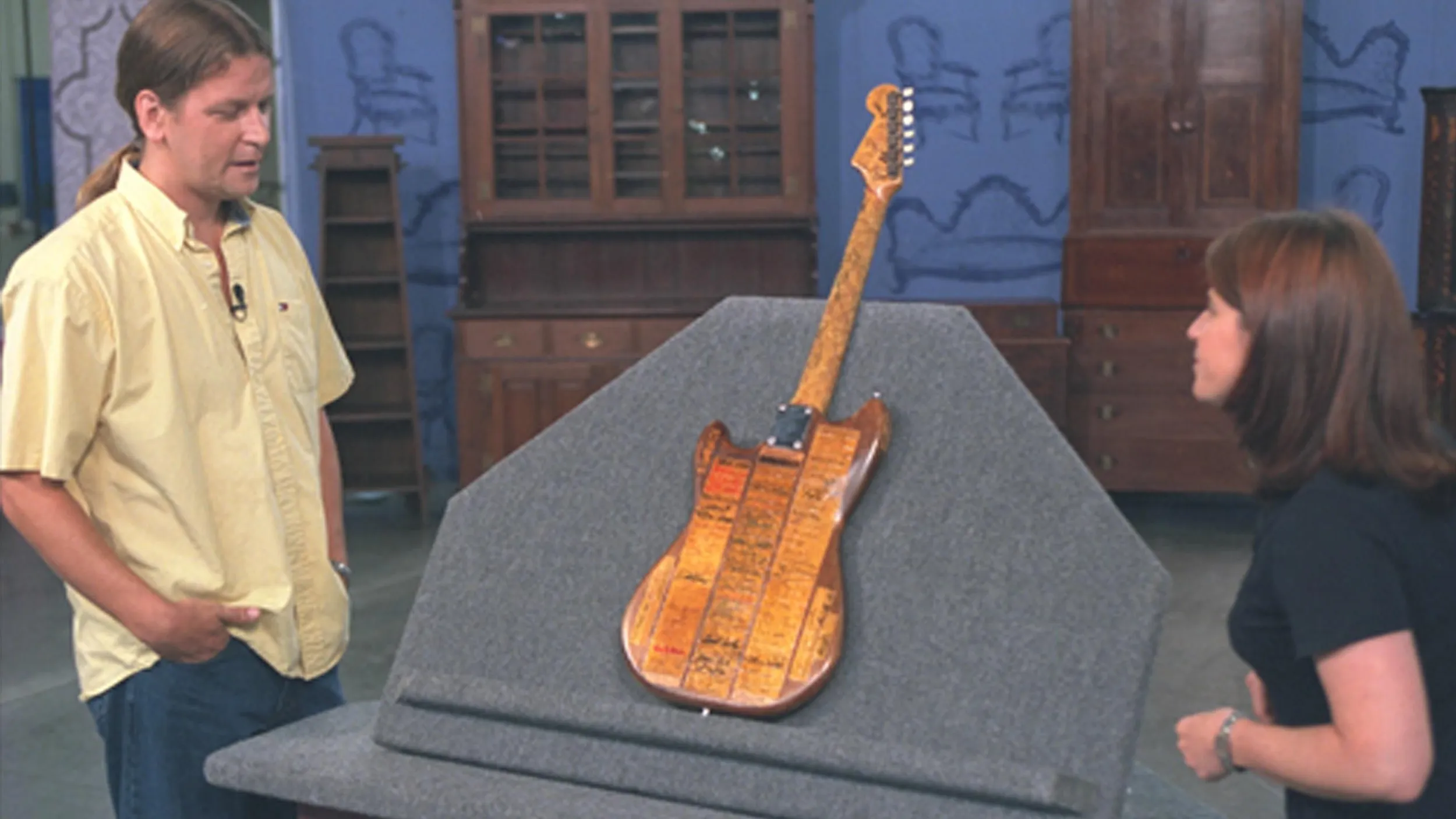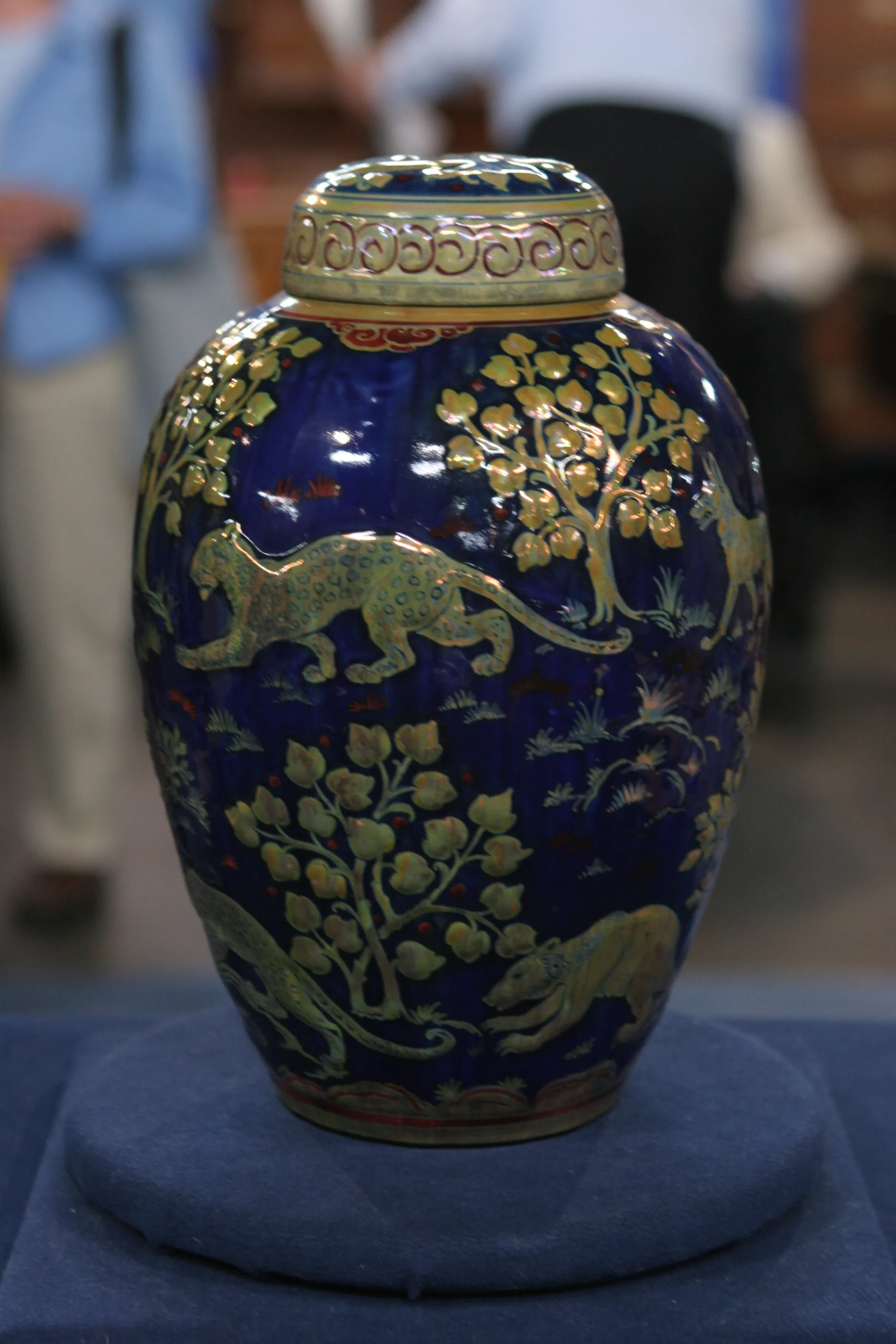GUEST: It belonged to a friend of my mother's, Christine Hoyt. When my mother was little, she used to go over to Christine's house, who was her next-door neighbor, and she used to read her the Reader's Digest, and as my mother got older, she moved away, but she still kept in touch with Christine. Christine used to travel to different parts of the world, and right before World War II, she traveled to Europe, like France, Italy, and Germany. And when she got back, she brought home a ton of antiques. This statue was one of them, and when she died at the age of 93 in 1975, she left a lot of antiques, including this statue, to my mother.
APPRAISER: Uh-huh. That's wonderful. Well, you've brought in this wonderful French 19th-century sculpture. It's by, actually, one of the leading academic sculptors in France at this time. His name was Alexandre Falguière. He's not particularly known in this country, but in his period, he was very, very well-known. He got lots of public commissions, he did things for the Paris Opera, he worked on architectural decorations, and he actually had five workshops, and he's also well-known as a teacher. One of his students was the famous American sculptor Frederick MacMonnies. The piece is very interesting because it's actually signed here, "Falguière," right on the top. And I think even more interesting is that it's signed "Goupil"-- G-O-U-P-I-L-- "& Company." And Goupil was a very famous gallery in Paris, and they had branches all over the world-- in London, in Vienna, in Berlin, and also in New York. And they published prints of paintings, and they also made editions of these bronzes, and they're very, very well-known. And, in fact, Vincent Van Gogh worked for Goupil Galleries in their London office, and his brother Theo Van Gogh also worked for Goupil and introduced the impressionist painting... painters to the market, through the Goupil Galleries. So you have a wonderful thing. But there's something else you... one of your primary interests was what that was, right?
GUEST: Yeah, we've been wondering about that for years.
APPRAISER: And it's really very, very straightforward. It's just a little knob to turn the piece. Originally, this piece would have had a pedestal. It had a turntable just like this, and this piece was used to turn it so that you could look at it from all sides because it's really quite wonderful all the way around. You have any idea of what the value is?
GUEST: I have absolutely no idea.
APPRAISER: Yeah. Well, again, it's very desirable, it's a good quality, the casting is wonderful, the patina is wonderful, the size is great, it has this wonderful, exotic subject matter. At auction we would probably get between $8,000 and $10,000 for it.
GUEST: Oh, my gosh!
APPRAISER: Okay.
GUEST: Oh, my gosh, that's amazing.








